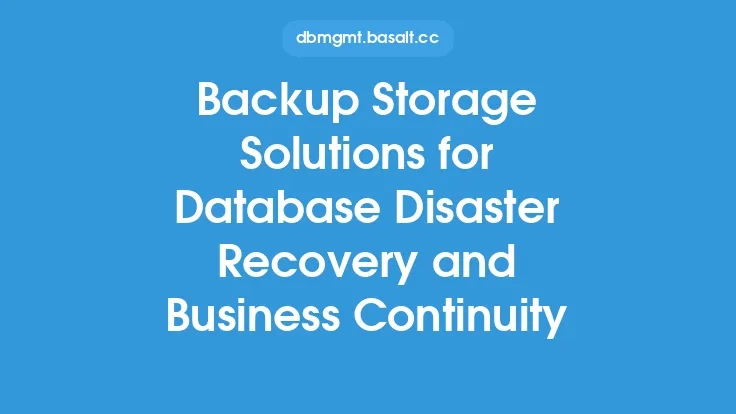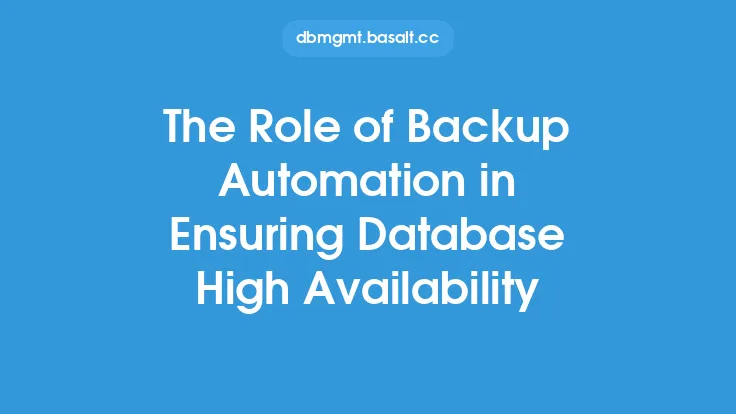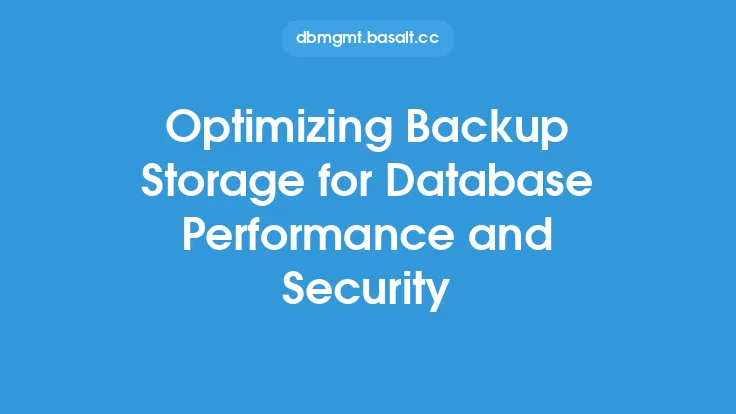When designing a database backup strategy, there are several key considerations that must be taken into account to ensure high availability and scalability. A well-planned backup strategy is crucial for protecting against data loss and ensuring business continuity in the event of a disaster or system failure. In this article, we will explore the essential considerations for developing a robust database backup strategy that meets the needs of high availability and scalability.
Understanding High Availability and Scalability Requirements
High availability and scalability are critical requirements for many modern databases, particularly those that support online transaction processing (OLTP) systems, e-commerce platforms, and other applications that require continuous access to data. To achieve high availability, databases must be designed to minimize downtime and ensure that data is always accessible, even in the event of hardware or software failures. Scalability, on the other hand, refers to the ability of a database to handle increasing workloads and large amounts of data without compromising performance.
Database Backup Strategy Considerations
When developing a database backup strategy, there are several key considerations that must be taken into account to ensure high availability and scalability. These include:
- Backup frequency and retention: The frequency and retention of backups will depend on the specific requirements of the database and the business. For example, a database that supports an OLTP system may require more frequent backups than a database that supports a data warehouse.
- Backup types: There are several types of backups that can be used, including full, incremental, and differential backups. Each type of backup has its own advantages and disadvantages, and the choice of backup type will depend on the specific requirements of the database.
- Backup storage: The storage of backups is also an important consideration. Backups can be stored on disk, tape, or in the cloud, and the choice of storage medium will depend on the specific requirements of the database and the business.
- Backup compression and encryption: Backup compression and encryption are also important considerations. Compression can help to reduce the size of backups, while encryption can help to protect sensitive data.
- Backup validation and verification: Backup validation and verification are critical to ensuring that backups are complete and can be restored in the event of a disaster or system failure.
Database Backup Tools and Technologies
There are several database backup tools and technologies that can be used to support high availability and scalability. These include:
- Database management system (DBMS) backup tools: Most DBMSs provide built-in backup tools that can be used to create and manage backups. For example, Oracle provides the Recovery Manager (RMAN) tool, while Microsoft SQL Server provides the SQL Server Backup and Restore tool.
- Third-party backup tools: There are also several third-party backup tools that can be used to support database backups. These tools can provide additional features and functionality, such as compression, encryption, and deduplication.
- Cloud-based backup services: Cloud-based backup services, such as Amazon S3 and Microsoft Azure Blob Storage, can also be used to support database backups. These services provide a scalable and secure way to store backups, and can be integrated with DBMSs and third-party backup tools.
Best Practices for Database Backup Strategy
To ensure high availability and scalability, there are several best practices that should be followed when developing a database backup strategy. These include:
- Develop a comprehensive backup plan: A comprehensive backup plan should be developed that takes into account the specific requirements of the database and the business.
- Test backups regularly: Backups should be tested regularly to ensure that they are complete and can be restored in the event of a disaster or system failure.
- Use multiple backup types: Multiple backup types, such as full, incremental, and differential backups, should be used to provide a high level of data protection.
- Use backup compression and encryption: Backup compression and encryption should be used to reduce the size of backups and protect sensitive data.
- Monitor backup performance: Backup performance should be monitored regularly to ensure that backups are completing successfully and within the required timeframe.
Conclusion
In conclusion, developing a robust database backup strategy is critical for ensuring high availability and scalability. By understanding the key considerations, using the right tools and technologies, and following best practices, organizations can ensure that their databases are protected against data loss and system failure. A well-planned backup strategy can help to minimize downtime, ensure business continuity, and provide a high level of data protection. By taking a proactive approach to database backup and recovery, organizations can ensure that their databases are always available and performing at optimal levels.





